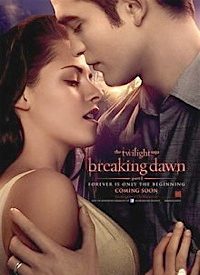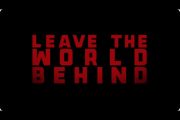
Breaking Dawn, part one of the final installment of the Twilight movie saga, brought in $139.5 million in its major North American box office debut. The film, though essentially just a teen flick, proved satisfactory to its most avid fans — which is about all that can be expected from a series about a girl who chooses to love and wed a vampire.
Breaking Dawn, Part One, follows 18-year-old Bella Swan (Kristen Stewart) on her journey with her beau, Edward Cullen (Robert Pattinson), a vampire who opts for animal blood over human blood. In this installment, the two lovebirds wed, and Bella very quickly becomes pregnant. However, as her unborn child is half-human and half-vampire, while Bella herself remains fully mortal, the child’s growth within her body poses a potentially fatal threat to her.
An added peril for Bella is that she is being relentlessly pursued by Indian werewolves, who are consumed by their hatred for vampires.
The film version of Breaking Dawn has all the necessary elements to engage teenage audiences: melodrama, hyperbolic romance, an overwhelming occult presence, and some intense action. Whether these plot elements are likely to transcend that particular audiencee, however, is another story.
Part One begins with Bella’s admirer Jacob Black (Taylor Lautner) becoming enraged upon receiving an invitation to Bella and Edward’s wedding, and reacting by removing his shirt and running through the woods as a werewolf. Possibly, teenaged audiences will overlook such plot weaknesses as why the prospective bride and groom even chose to send a wedding invitation to such a volatile character.
As it turns out, Jacob’s strong emotional response to the invitation does not arise solely from jealousy; he is also reacting to what he believes will be an increasingly dangerous situation for Bella. He predicts that Bella’s wedding and consummation of her marriage to Edward prior to her transformation into a vampire will kill her. Jacob also realizes that marrying Edward will place Bella squarely in the path of werewolf fury.
Jacob proves to be something of a sage. Bella does not wish to be turned into a vampire until after her honeymoon, and as careful as Edward is during their consummation, he does manage to bruise her a bit and break their bed. Days later, Bella discovers that she is pregnant with a half-human, half-vampire baby, which begins to grow at an exponential rate and consume all the nutrition in Bella’s body, rendering her dangerously ill.
Edward and his family, as well as Jacob, advise Bella to abort her baby, highlighting a moralistic debate not entirely clarified. Bella finds an ally in the vampire Rosalie (Nikki Reed), who agrees that Bella should not simply “get rid of” the baby. In fact, when Edward’s vampire sister Alice (Ashley Greene) refers to Bella’s unborn child as a fetus in a poignant scene, Rosalie becomes visibly angry and demands that Alice “Say the word” “baby.” Fortunately for pro-lifers in the audience, Bella is defiant and asserts that she wants to keep her unborn child.
It becomes clear that the only way Bella can survive is if Edward manages to turn her into a vampire before the baby is born.
During Bella’s ordeal, Jacob’s werewolf pack remains adamant about killing Bella and her baby, forcing Jacob to turn against the pack leader, Sam.
While Breaking Dawn does include some moral elements — such as the notion of doing what is right despite the consequences, Bella’s insistence on keeping her baby, Edward and Bella’s choice to abstain from sexual relations until after they are married, and sacrifice for the good of another — many moviegoers will find its blatant occult themes too much to overcome.
Even though the Cullens are treated as heroes in the saga, there are small reminders throughout this latest film that vampires are recognized as villains. When a housekeeper places her hand on Bella’s stomach, for example, she is visibly shaken and hisses the word “Death!” Another of the housekeepers, frightened by Edward, calls him a demon.
Movieguide (an online family-oriented movie review site) took strong exception to Breaking Dawn from a Christian perspective, noting:
MOVIEGUIDE® deems the first BREAKING DAWN movie as unacceptable viewing for media-wise families, but especially for Bible-believing Christians, and even Jews. Children can be influenced negatively by this movie. In fact, the more intelligent they are, the more they may insert the goofy philosophic and metaphysical elements of BREAKING DAWN into their own worldview and scripts of behavior.
For that reviewer, the film’s distance from Christian theology, which preaches redemption through salvation and deliverance from sin through Jesus Christ’s sacrifice is, so to speak, the final nail in the coffin.
Breaking Dawn‘s melodrama is enough to frustrate some of the more curious in the audience. Though this is the fourth film in the saga, it is still painfully unclear what either Edward or Jacob sees in Bella. The romance between Bella and Edward, and the passion evidenced between Bella and Jacob, both seem entirely unwarranted. “Bizarre” seems the best description of the emotions among these three characters.
The film contains some fairly violent and bloody scenes, particularly in relation to Bella’s pregnancy. Her unborn child is actually slowly killing her, and the experience is extremely painful physically. At one point, the baby breaks her ribs, and in another scene Bella seemingly breaks her back in an effort to stand. Eventually, the Cullens are forced to perform a gruesome C-section on the expectant mother.
No doubt for the teens in the crowd, the good looks and stunning physiques of the cast compensate for the poor performances of the cold-fish vampires.
Though Breaking Dawn should please avid followers of the Twilight saga, it cannot be recommended for other audiences.




